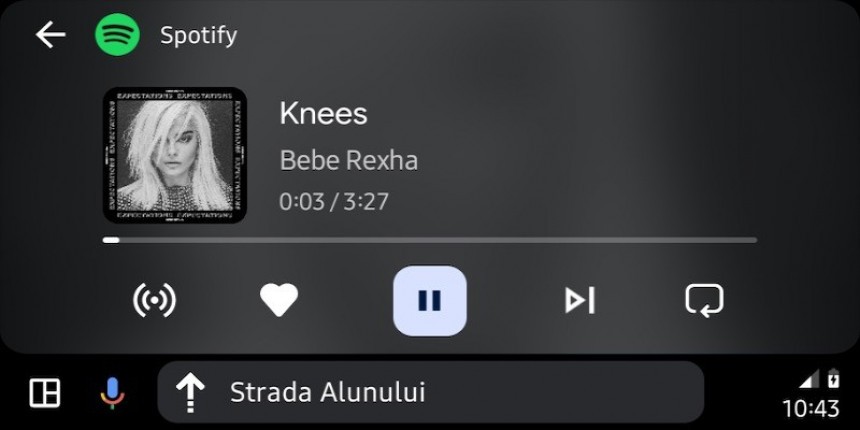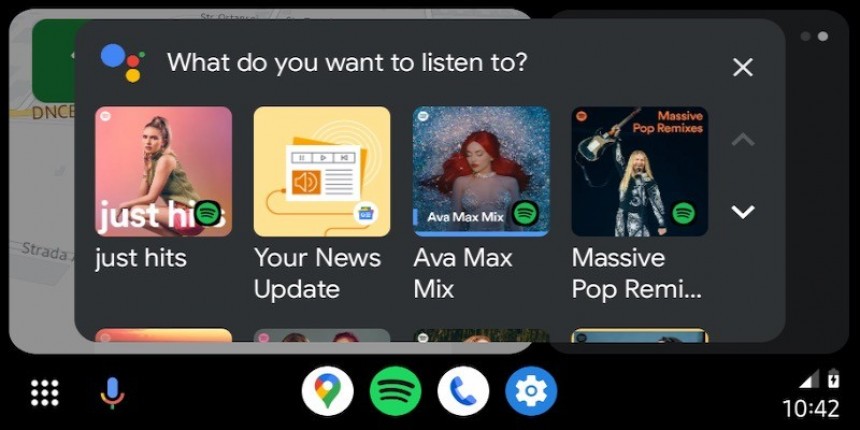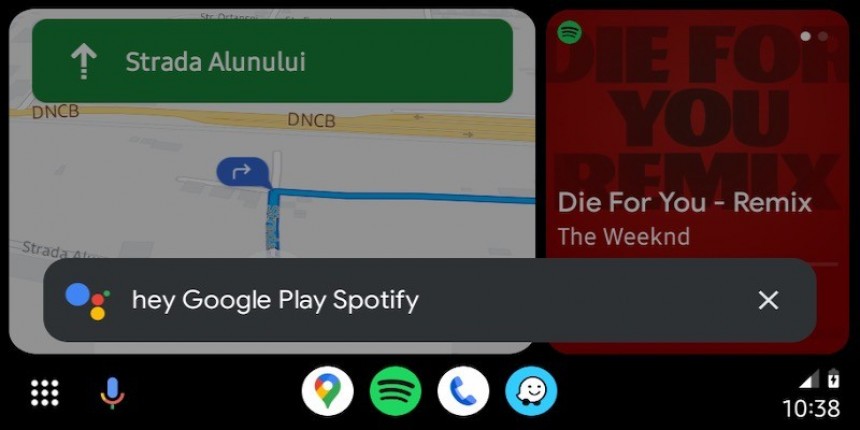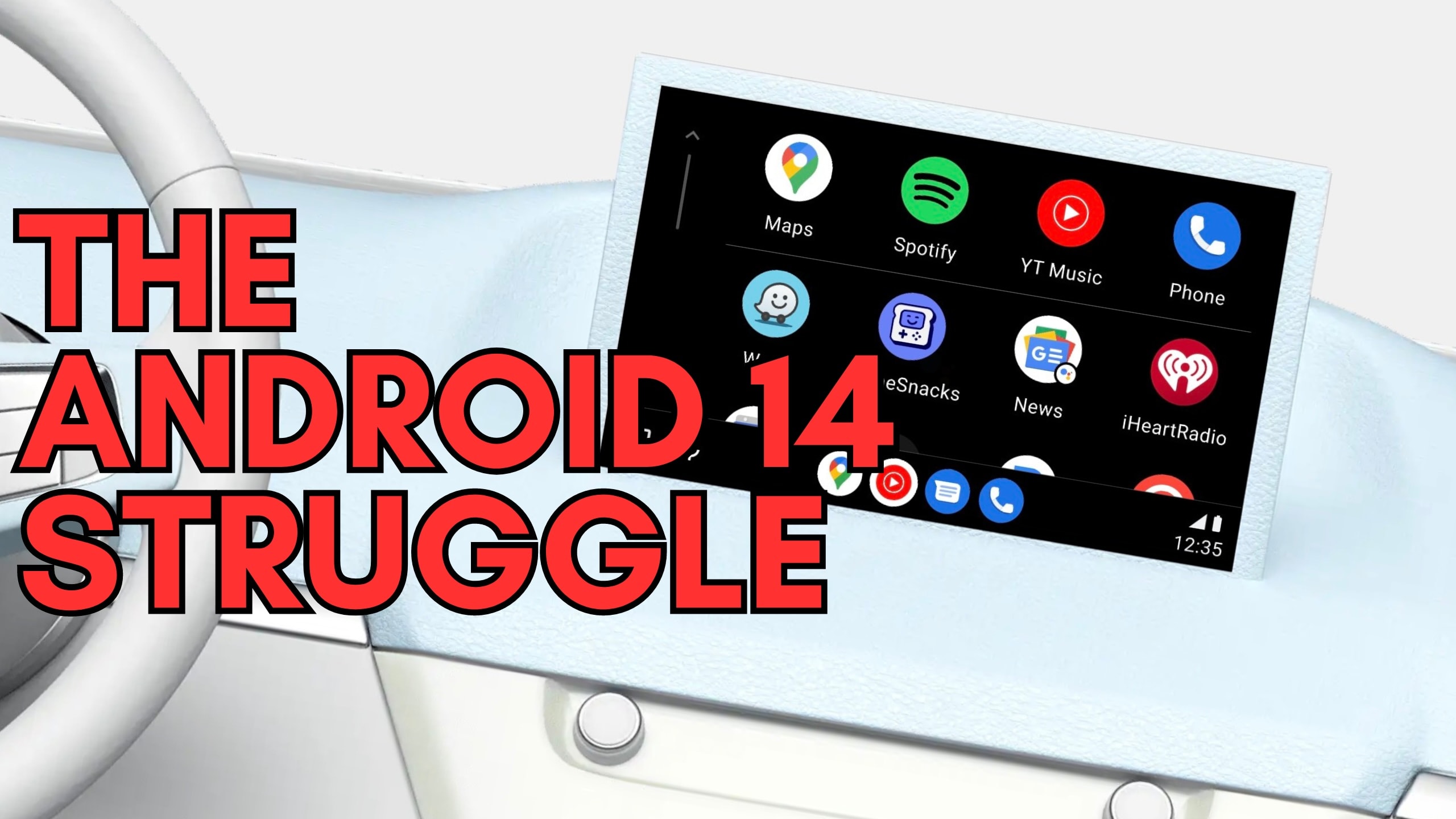
Photo: bogdan popa/autoevolution/google
In addition to the obvious benefits, Android Auto wireless should also provide improved connection stability and reliability.
The first thing you get when you turn on Android Auto wireless is extra convenience. You no longer need to run the app using a cable, which means you can forget about the wires in your cubicle, and keep everything more organized.
In addition, Android Auto wireless is also easier to use. You can keep the phone in your pocket or backpack, and the moment you turn on the engine, it connects to the head unit, launching Android Auto without further input on your part.
But the biggest benefit is improved stability and reliability. If you’ve been using Android Auto for more than a few weeks, you should know that cables are the culprit behind a frustrating number of issues in the Google world. A bad cable can wreak havoc in your car, causing glitches like random disconnects, audio loss, or the head unit not detecting the phone.

Photo: Bogdan Popa/Automatic Evolution
As a result, it’s not surprising to see a lot of people buying wireless Android Auto adapters. These devices allow them to switch a wired connection to wireless within seconds, making the experience more convenient overall.
Enter Android 14.
As I’ve told you on several occasions, Android 14 is by no means the great update Android Auto users expected. Despite not offering any major improvements to the driving experience, Android 14 should still improve Android Auto further, at least addressing some of the known bugs that users have already reported.

Photo: Bogdan Popa/Automatic Evolution
For example, one of the most common bugs that has been around for months concerns the Coolwalk update. The bottom of the screen sometimes freezes, preventing users from switching apps and interacting with apps on the screen. This issue was first reported shortly after Google started rolling out Coolwalk in January, and users are still complaining about the same issue almost a year later.
Now it appears that Android 14 also disables Android Auto wireless.
One of our readers told me in a message that updating to Android 14 prevents the mobile device from connecting to the head unit to run Android Auto. The infotainment system no longer detects the phone, as if it is not paired.

Photo: Bogdan Popa/Automatic Evolution
None of the solutions available in the Android Auto world were able to restore the app after updating to Android 14. Our reader told me that they cleared the cache and data of the Android Auto app, reinstalled it from the Google Play Store, removed all updates, and even manually downgraded it. Previous version to no avail.
All indications are that Android Auto suffers from a damaged connection issue between the phone and the head unit. The most obvious solution is to completely reset the connection profiles, and when you start from scratch and pair the phone and head unit again, everything should work properly. However, our reader says this doesn’t make a difference.
I searched the web and found many other users complaining about the same problem with their cars. One person says they encountered the error with a Google Pixel smartphone, while another user claims to be experiencing the same behavior on a Samsung device. The bug doesn’t seem to have any preference when it comes to which brand is displaying this broken connection, and the only common reason is Android 14.
Users on the Google forums claim that the issue is more common with aftermarket flagship units that support the wired version of Android Auto. Sony devices are often affected, but everyone says that Android Auto works properly on Android 13. The problems appeared after installing Android 14 on the smartphone, without any software change on the main unit.

Photo: Bogdan Popa/Automatic Evolution
Google has already begun investigating several bugs potentially caused by Android 14, but the company has not yet released fixes. In this particular case, the company says it needs more information to continue the investigation, but it’s too early to know when a fix might be sent. Unfortunately, without certain information, it is difficult to hope that the problem will be resolved in the coming weeks, so the only option users have now is to wait.
Meanwhile, if you haven’t updated to Android 14 on the device running Android Auto, I recommend you create a backup so you can go back to Android 13 faster and more convenient if something doesn’t work as planned. Downgrading from Android 14 to Android 13 without a backup is a huge pain in the neck, and you definitely don’t want to go through all that hassle. If anything, you can also try updating to Android 14 on a secondary device if you want to determine the reliability of Android Auto in your car.
The recent announcement of Android 14 has stirred up concern among users of Android Auto Wireless, as this new version of the operating system is expected to have negative implications for the wireless connectivity of Android Auto. With rumors of potential compatibility issues and decreased performance, many Android Auto users are worried about the impact that the release of Android 14 will have on their driving experience. In this article, we will explore the potential challenges that Android 14 may pose for Android Auto Wireless and discuss how users can prepare for these changes.

